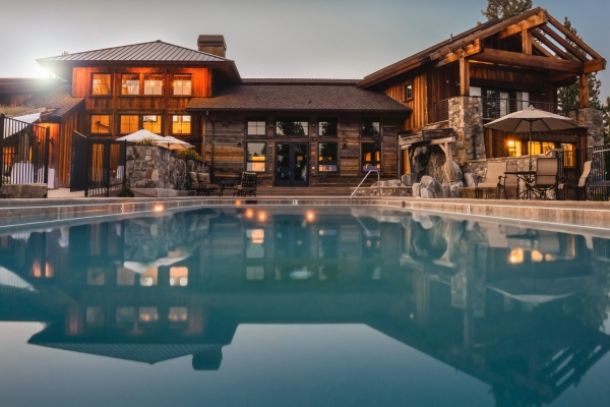The Guide to Crafting Your Wooden House
The Guide to Crafting Your Wooden House
Crafting a wooden house is both an art and a science—a journey that transforms raw timber into a home with character, durability, and a personal touch. This guide is designed to walk you through the process of crafting your wooden house step by step, from initial planning to the final finishing touches. Emphasizing both traditional craftsmanship and modern construction techniques, this article provides practical insights and creative ideas to help you build a home that reflects your unique vision.
Introduction
Building a wooden house isn’t just about assembling materials—it’s about crafting a living space that tells a story. The process involves careful planning, material selection, precise construction, and artistic detailing. Whether you’re a seasoned DIY builder or embarking on your first project, understanding how to craft your wooden house will empower you to create a structure that’s not only functional but also full of character.
Conceptualization and Planning
Envision Your Dream Home:
Begin by clarifying your vision. Think about the layout, the number of rooms, and the architectural style that suits your lifestyle. Create a mood board with images, sketches, and inspirations that capture the atmosphere you want to achieve. This creative exercise lays the foundation for your design.
Develop Detailed Blueprints:
Transform your vision into detailed plans. Use design software or work with an architect to develop blueprints that include precise dimensions, structural supports, and locations for windows, doors, and utilities. Detailed plans help avoid errors during construction and provide a clear roadmap for the project.
Budgeting and Scheduling:
Establish a realistic budget that covers all aspects of the project, including materials, permits, tools, and a contingency for unforeseen expenses. Create a timeline with milestones for each phase—from foundation to framing, roofing, and finishing. This planning ensures that the project proceeds smoothly and on schedule.
Material Selection and Preparation
Choosing Quality Wood:
The selection of wood is critical. Opt for durable species such as cedar, pine, or oak, considering both aesthetics and structural requirements. Ensure the wood is properly seasoned to reduce risks of warping or shrinking later. Sustainable sources, like reclaimed or certified timber, not only help the environment but add unique character to your home.
Preparing the Wood:
Properly preparing the wood is essential. This involves planing, sanding, and treating the wood with eco-friendly preservatives or sealants to enhance its longevity. The preparation stage sets the stage for a refined finish and ensures that each piece fits seamlessly into your design.
Construction Techniques and Joinery
Traditional Joinery and Modern Enhancements:
A hallmark of a handcrafted wooden house is the use of traditional joinery techniques—mortise and tenon, dovetail, and saddle notches have been used for centuries to join timber securely. These methods not only provide strength but also contribute to the aesthetic appeal of the structure. Supplement these techniques with modern fasteners and digital measuring tools to ensure accuracy and consistency.
Framing and Assembly:
Begin by laying a solid foundation suited to your site conditions. Once the foundation is ready, proceed with erecting the frame using high-quality, treated lumber. Utilize modern tools like laser levels and digital calipers to achieve precise cuts and alignments. Proper framing is crucial for the long-term stability of your house.
Detailing and Craftsmanship:
As you assemble the structure, pay attention to the details. Custom joinery, intricate carvings, and well-executed inlays can elevate the design of your wooden house, making it uniquely yours. Each handcrafted detail adds personality and warmth to the overall design.
Finishing Touches and Personalization
Exterior Finishes:
Apply high-quality sealants, stains, or low-VOC paints to the exterior of your wooden house. These finishes protect the wood from environmental elements—UV rays, moisture, and pests—while enhancing its natural beauty. A well-finished exterior not only looks appealing but also extends the lifespan of your home.
Interior Design:
The interior of your house is where you can truly let your creativity shine. Consider open floor plans that maximize natural light and incorporate natural textures through exposed beams, custom cabinetry, and handcrafted fixtures. The use of natural materials like stone or reclaimed wood in the interior can create a cohesive, warm atmosphere that complements the wooden structure.
Long-Term Maintenance and Legacy
Routine Inspections:
Crafting your wooden house is just the beginning—the long-term care is equally important. Establish a maintenance schedule that includes regular inspections for moisture, pest activity, and structural wear. Early intervention can prevent minor issues from escalating into significant repairs.
Documenting Your Journey:
Document every stage of the process, from initial sketches to the final installation of fixtures. This not only serves as a record of your craftsmanship but also provides valuable insights for future projects. Your wooden house will stand as a legacy, reflecting the effort, skill, and passion you invested in its creation.
Conclusion
The guide to crafting your wooden house combines traditional techniques with modern innovations, empowering you to build a home that is both beautiful and enduring. With careful planning, quality materials, precise construction, and personal artistic touches, you can transform raw timber into a sanctuary that reflects your unique vision. Embrace the art of wood crafting, and let each step of the process be a testament to your creativity and dedication.


